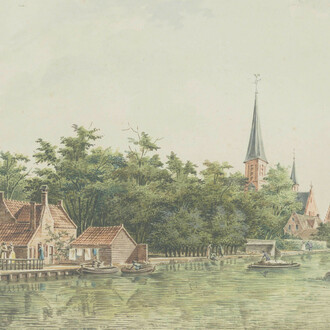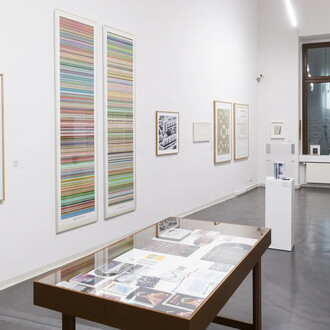This summer, Galerie Thomas Schulte presents the installation Red, Yellow, Green, In Time by US-American conceptual artist Matt Mullican. Through the end of August, the gallery‘s Corner Space will feature three of Mullican‘s enormous, colorful fabric banners, one after the other, announcing their symbolic message into the urban space. The banners are part of a ten-part installation that was shown for the first time at the Neue Nationalgalerie in Berlin.
Mullican has developed a subjective cosmology that he translates into colors and pictograms as a means to order and make sense of the world and how we perceive it. With his banners, Mullican uses an extremely simplified visual language that can be captured in a matter of seconds. At the same time, they address complex interrelationships and universal, existential questions including the relationship between reality and its representation and how images emerge and the way they produce meaning. To that end, Mullican has developed his own reference system that divides the world and its perception into five categories: The level of objects and matter corresponds to the color green and to the basic geometric forms of triangle, circle and square. In the color blue as well as in the symbol of the stylized (unframed) globe, the everyday world is depicted, our environment and the daily reality which we do not question. The color yellow together with the symbol of the framed globe refer to human thought, to the arts and sciences, while black and white represent the level of communication, language, semiotic systems, and meaning. Finally, the color red and the sign of the head and brain symbolize subjectivity; a person’s own thoughts and sentiments.
The sequence of the featured banners are, as the title suggests, red, yellow, and green. In the Window Space, Mullican’s 3-part neon installation alternates in a similar fashion through the same colors and corresponding symbols. It is up to the viewer to decipher the different levels of meaning that Mullican aims to bring to light through art and which his pictograms paradoxically illustrate in such a simple and striking way.
















